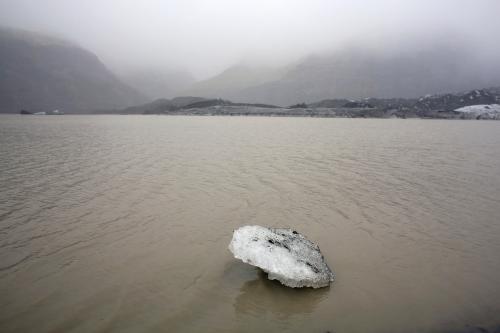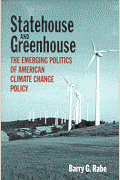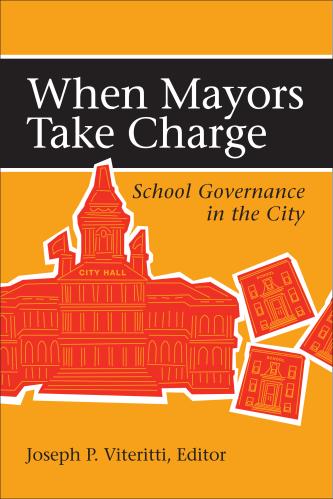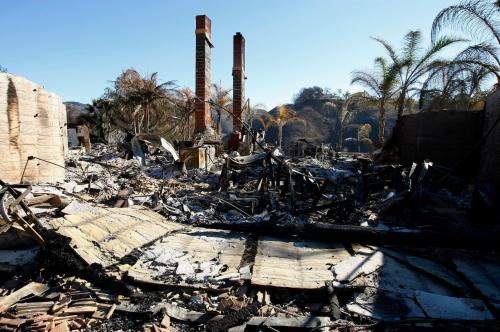Content from the Brookings-Tsinghua Public Policy Center is now archived. Since October 1, 2020, Brookings has maintained a limited partnership with Tsinghua University School of Public Policy and Management that is intended to facilitate jointly organized dialogues, meetings, and/or events.
As the last days of the Barack Obama presidency wind down and the country prepares for the inauguration of Donald Trump as the 45th President, there are few policy areas where the differences between the current and future administrations appear as great as on the issue of climate change. President Obama made climate change a priority of his presidency, particularly in his second term, including through major policy initiatives such as the Clean Power Plan and strong support for the Paris Accords. But President-elect Trump has indicated he might reverse course when he assumes office.
So where do Americans stand on climate change as a presidential transition nears? The Fall 2016 version of the National Surveys on Energy and the Environment (NSEE) from Muhlenberg College and the University of Michigan indicate that in many important ways American views regarding climate change at the beginning of the Trump years resemble those at the beginning of the Obama Presidency.
On the core issue of acceptance of evidence of global warming Americans are in an almost identical place as they were eight years ago. Just prior to Barack Obama’s election in the fall of 2008, 72 percent of Americans indicated that they thought there was solid evidence of global warming with only 17 percent skeptical of such evidence and 11 percent unsure about this matter. In the most recent round of the NSEE—conducted in the lead-up to Donald Trump winning the presidency—70 percent of Americans stated that there is solid evidence of global warming with 17 percent not seeing such evidence and 13 percent not sure. While it is important to note that while there were significant shifts of public opinion regarding global warming in the years between these elections, particularly during a dramatic decline in acceptance during 2009 and 2010 (Figure 1), Obama and Trump will have arrived in the Oval Office with remarkably similar public views on the existence of climate change.
Figure 1: American views on the existence of evidence of global warming,
2008-2016

These fairly similar levels of acceptance of global warming are also reflected in views on climate change across the partisan divide. Notably, an identical 82percent of Democrats in 2008 and 2016 indicated that there was solid evidence of global warming (Figure 2). Republicans were significantly less likely to see evidence of global warming than Democrats in both years, but there was little difference among GOP loyalists between 2008 (55 percent) and 2016 (51 percent).
Figure 2: Partisan views on the existence of evidence of global warming,
2008 and 2016

Question: “From what you’ve read and heard is there solid evidence that the average temperature on earth has been getting warmer over the past four decades?”
The very similar levels of public acceptance of the existence of climate change in these years, of course, do not tell the entire story of American perceptions of this issue. One notable difference between the start of the Obama and Trump presidencies is in the confidence of Americans in their positions regarding climate change. The NSEE results show that those accepting evidence of climate change are significantly more confident of their stance in 2016 than in 2008 (Figure 3). For example in 2008 only 58 percent of those that thought temperatures on the planet were increasing were very confident in their position on the matter compared to 71 percent today.
Figure 3: Confidence that earth IS warming, 2008–2016
(among Americans who think global warming is occurring)

The first NSEE in 2008 did not ask climate change skeptics how confident they were that temperatures on the planet were not increasing. But subsequent surveys have shown that this group has become more confident that global warming is not happening. In 2016, a record 59 percent of this group state that they are “very confident” that there is not solid evidence of increasing global temperatures (Figure 4). These findings may suggest that many Americans may have immovable views on this issue.
Figure 4: Confidence that earth IS NOT warming, 2010–2016
(among Americans who think global warming is not occurring)
What if any effect will the broadly similar public opinion regarding climate change that Obama faced in 2008 have on Trump’s approach to this issue? For Obama, the fact that seven out of 10 Americans accepted evidence of climate change certainly aided his decision to push for major climate legislation early in his presidency, even though he failed to secure Senate support for cap-and-trade legislation.
But as Trump enters office with campaign pledges to reenergize America’s coal industry and a long rhetorical record challenging the existence of climate change, will strong public acceptance of global warming act as a head wind against wholesale policy retrenchment efforts? It is possible that Trump will moderate his rhetoric on climate change to align more closely with the vast majority of Americans who think that global temperatures are indeed increasing while simultaneously putting together a policy agenda that undermines many of Obama-era efforts to reduce greenhouse gas emissions. Yet, a cordial meeting with Al Gore followed by the appointment of Scott Pruitt as EPA administrator in the same week might be a harbinger of a more complicated Trump two-step on climate policy.
The Brookings Institution is committed to quality, independence, and impact.
We are supported by a diverse array of funders. In line with our values and policies, each Brookings publication represents the sole views of its author(s).













Commentary
American views on climate change at the dawn of the Trump presidency
December 15, 2016